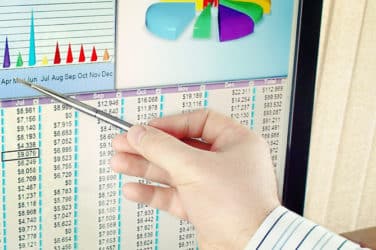Arresting entropy in commodities trading: Towards a single platform model
Mike Wilkins and Paul Dex at Fidessa consider the challenge and necessity of cutting complexity when it comes to commodities trading IT estates.
Entropy. A tendency towards disorder. For an observer of the commodities market, it may feel all too familiar.
The days of dealing with a clutch of standard contracts traded across a handful of exchanges with defined trading hours are gone. Commodities firms are now 24/7 global operations, firing orders around for a myriad permutation of contracts.
Change driven by market trends, regulations and local idiosyncrasies has seen commodities firms establish desks around the world, trading in different currencies, using different trading platforms often made up of a mishmash of software cobbled together. The technology estate is fragmented and consequently, so is the firm’s view of risk and its own trading activity. That comes at a cost. Until now, it’s a cost firms have largely resigned themselves to bearing, either because there wasn’t an alternative, or the benefits of change weren’t deemed worth the difficulty. That view is fading.
The cost of disorder

Mike Wilkins, Fidessa
Consider the scenario. In Chicago, a trader enters a position on the CME for wheat, traded in dollars and measured in bushels. His Parisian colleague does the same, but his contract is traded in Euros and measured in metric tonnes. Each trader hedges their position. The wheat is grown in different places and will have slightly different characteristics, but both are affected by the same fundamental market conditions. The two positions affect each other, and without a consolidated view, the head of trading can’t confidently understand overall exposure. At the same time, two traders have made hedge trades, incurring broker commissions and exchange fees, when a single combined hedge trade would have sufficed.
This is a pattern repeated globally hour by hour, day after day. Wheat is just one example, but Brent versus WTI is another. It may sound simple to consolidate positions, but when relying on a sprawl of trading platforms and spreadsheets around the world, it’s anything but. When traded contracts differ for similar underlying commodities, firms must also find a common approach to pricing risk and planning hedges. However, most firms could match a considerable percentage of their flow internally.
Those trading in products or via entities affected by MiFID II will also find that this approach helps them to adhere to the strict position limits now in force. By internalising flows, the organisation is less likely to breach limits, or have to make fewer sacrifices to keep within them.
Growing complexity

Paul Dex, Fidessa
There are three compelling reasons to think again. First, the general regulatory push for a firmer understanding of compliance, risk and money management across trading firms. Dodd-Frank in the US and MiFID II in Europe push financial markets and participants to greater transparency and self-understanding. Second, the mounting business case across various commodity markets as the trading landscape changes. Third, innovative technology now exists to make a consolidated approach possible.
Consider the oil market. In the heady days of $120 oil, incentive for consolidation was limited. Expansion was the name of the game and profits were plenty high enough to cover inefficiencies. Then the crash – when many organisations would have been rueing bloated IT ecosystems but had little cash to invest in rectifying the situation. Now though, with prices rebounding to a respectable but not excessive level, there is both the potential and business case for investment.
Or take LNG: US exports have made it the commodity du jourand natural gas has become a more liquid, volatile market. High fees and market rates make the trading opportunity high, but the cost of a suboptimal, unconsolidated trading strategy high too.
In other commodity markets the opposite problem arises. Look at ags, where prices are depressed. With no firm indication of how long the slump will last, heads of trading and chief operating officers will be seeking ways to avoid unnecessary cost and risk, yet be struggling for the capital to invest.
The art of the possible
The goal then, is a single, state-of-the-art consolidated platform. One that brings together global execution management, order management and hedge management, and provides an additional layer of risk management in the process. By having this, firms gain a greater understanding of their risk, can reduce the cost and volume of hedge trading and halt the creeping disorder all too common for global trading IT estates.




